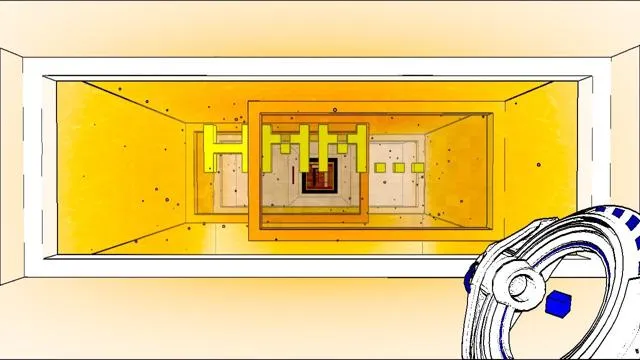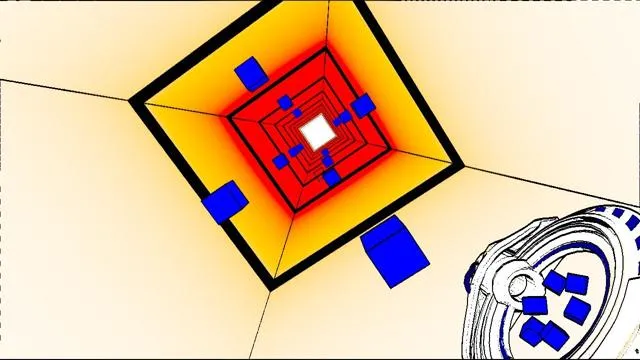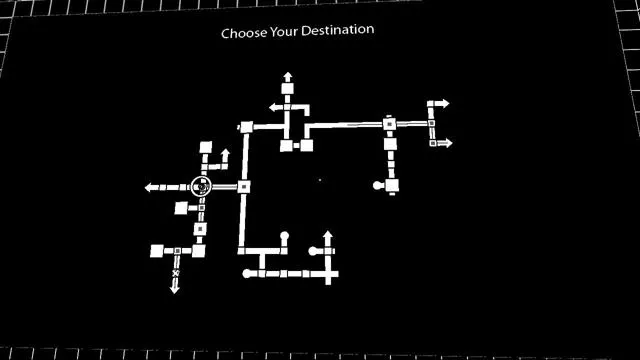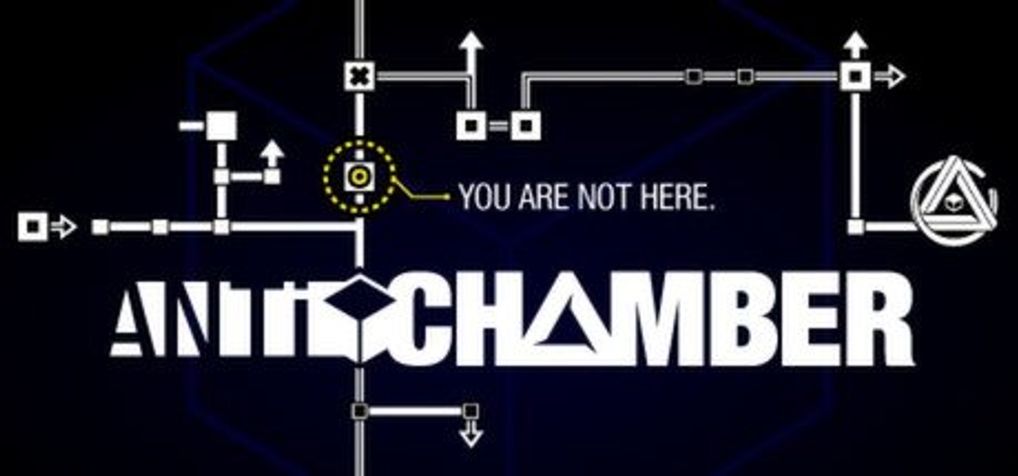Antichamber
It’s always interesting when a particular art style inspires a game. The last game I played that was clearly inspired by a particular art style was Apocalipsis , and while I didn’t think it was very good, I could at least appreciate how it channeled its art style and used that to inform its gameplay choices. The same is true of Antichamber, albeit with a very different style, and with a very different game. It is, however, no less of a game inspired by a particular art style (or artist, in this case).
 This is the common theme of the game.
This is the common theme of the game.
Antichamber is a puzzle game inspired by the work of Escher. It presents a long series of puzzles, the solutions to which often involve twisting the mind to match the warped and twisted reality of the world around the player. There are no enemies or external pressures. There is only the world and the nebulous path to the exit. The player eventually gains access to a series of tools that allow them to manipulate the world, but even this manipulation still exists within the rules of the bizarre reality the game has created.
 Cube is friend.
Cube is friend.
Antichamber is inspired by the art of MC Escher. Its puzzles rely both on traditional puzzle elements and Escher-esque level design that keeps the player rethinking reality and how its various warpings and permutations can be used to solved the puzzles in front of them. Antichamber isn’t just inspired by Escher - as a game, it is designed to embody Escher and provide the player the experience of trying to understand and solve impossible designs.
 So many destinations, and yet, so few answers.
So many destinations, and yet, so few answers.
Any puzzle game that incorporates both traditional puzzles and a difficult to navigate world could easily fall into the trap of becoming too complex or tedious to navigate. Antichamber somehow avoids this. Through a visually compelling level design, it’s easy to forget that you’re in a puzzle at all. At some point, exploration for its own sake becomes a driving motivator. That sense of exploration, and of wanting to see where the pattern goes creates an environment where the player wants to try different approaches. Backtracking ceases to be an exercise in tedium, and instead becomes a chance to see what a room looks like from a new angle, or what was missed the first time around.
 The visuals are incredible.
The visuals are incredible.
Antichamber is a gem of a game. Its combination of design and visual style make for a bizarre and glorious experience. I wasn’t always the best at solving it, but it was an absolute treat of an experience.
Developer: Demruth
Genre: Puzzle
Year: 2013
Country: Australia
Language: English
Play Time: 2-10 Hours
Youtube:
